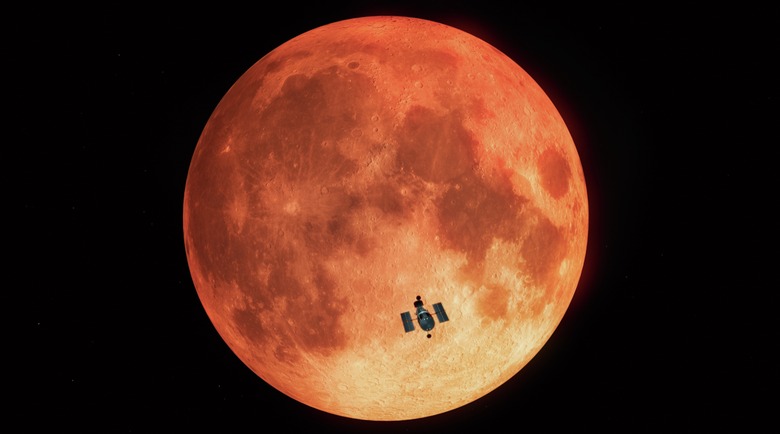Strawberry Moon: How To Watch The Last Supermoon Of 2021 This Week
The summer is only just beginning in earnest, which means the days are about to get even hotter in the northern hemisphere. This makes going out at night even more exciting, especially for those who are on a mission to gaze at the sky after the sun sets. It's not just the stars that you'll want to check out in the coming days, as the last supermoon of 2021 is nearly upon us. This is your last chance this year to take advantage of the phenomenon, with a Strawberry Supermoon set to light up the sky later this week.
The full Strawberry Moon rises on Thursday, June 24th, Farmer's Almanac reports. But it won't be painted in strawberry colors.
You'll have to look southeast on Thursday evening to catch the full moon rising over the horizon. It's supposed to be large and golden and reach peak illumination at 2:40 PM Eastern Time, but it won't be visible until later that evening. Of course, that's assuming the sky is clear enough to catch June's full moon in action.
The Almanac explains that it defines a full moon as a supermoon if it's less than 224,000 miles (360,000 kilometers) away from Earth, with June's Strawberry Supermoon being just outside the cut at 224,662 miles (361,558 km) out. But this month's supermoon is just "a couple thousand miles farther away than April and May's supermoons," so viewers shouldn't notice the difference.
As for the name chosen for this month's supermoon, Strawberry Moon doesn't necessarily concern the moon's hue. As the Almanac explains, June's full moon is traditionally called the Strawberry Moon — the last full moon of spring or the first of summer. The name originates from the Algonquin, Ojibwe, Dakota, and Lakota peoples to mark the ripening of June strawberries that are ready to be gathered.
Alternative names related to crops for the June full moon are Blooming Moon, Green Corn Moon, and Hoer Moon. Others have associated the period with animal-related events — Birth Moon, Egg Laying Moon, and Hatching Moon. Over in Europe, the June full moon has been associated with marriages, and it was referred to as Honey Moon and Mead Moon.
But NASA explains that there's some merit for thinking the Strawberry Moon should appear in a reddish hue due to the position of the full moon relative to the Earth during this time of year:
The orbit of the Moon around the Earth is almost in the same plane as the orbit of the Earth around the Sun (only about 5 degrees off). On the summer solstice, the Sun appears highest in the sky for the year. Full Moons are opposite the Sun, so a full Moon near the summer solstice will be low in the sky. Particularly for Europe's higher latitudes, when the full Moon is low it shines through more atmosphere, making it more likely to have a reddish color (for the same reasons that sunrises and sunsets are red)
While June 24th is the best day to enjoy the Strawberry Moon, the full moon will rise through June 26th. The Almanac has a moonrise and moonset calculator to help you determine the best time to catch the Strawberry Moon in your region. Separately, NASA has more skywatching highlights for this week beyond the Strawberry Supermoon.
